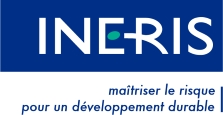PFAS and PMT/vPvM: what are we talking about?
Per- and polyfluoroalkyl substances (PFAS) are a group of synthetic chemicals manufactured and used in a large number of everyday applications worldwide, which end up in the environment as a result of discharges from production units or indirectly from the use or end of life of products containing them. A PFAS is defined as a substance (polymer or non-polymer) with at least a perfluorinated methyl group (–CF3) or a perfluorinated methylene group (–CF2–). This terminology was defined by the harmonization work carried out by the OECD/UNEP Global Perfluorinated Chemicals (PFC) Group1.
Given their structural variety (carbon chain length, type of function...), the PFAS group includes several thousand substances, among which perfluorooctanoic acid (PFOA) and perfluoroctanesulfonic acid (PFOS) are the most studied, and which also includes perfluorohexane sulfonate (PFHxS) and perfluorohexanoic acid (PFHxA).
The groups of Persistent, Mobile and Toxic substances (PMT) and Very Persistent and Very Mobile substances (vPvM) bring together chemical compounds on the basis of their intrinsic properties that make them likely to spread widely in the environment and remain there for a long time. The criteria for concluding whether a substance is PMT or vPvM are currently being developed by the European Union.
The PFAS and PMT/vPvM issues are linked because they both correspond to a similar environmental issue: the contamination of the environment (especially groundwater) by persistent substances (or "forever chemicals") likely to be present in drinking water. In addition, some PFASs are likely to degrade to PMT/vPvM substances. The list of 260 REACH-registered substances that could be identified as PMT/vPvM according to the German Environment Agency (UBA) itself includes PFASs (e.g. PFBS (CAS No. 29420-49-3) identified as vPvM and γ-ω-perfluorinated C8-14 alcohols (CAS No. 68391-08-2) under the PMT category)
Both PFAS and PMT/vPvM substances are are targeted by the EU Chemicals Strategy for Sustainability proposed by the European Commission in October 2020 and approved by the Council in March 2021.
Why are PFAS and PMT/vPvM substances an environmental problem?
PFAS, due to the strength of the carbon-fluorine bond, are unlikely to biodegrade, and can therefore contaminate the environment in an often-irreversible way. Most of these substances are easily transported in the environment over long distances, and their presence is generally observed on a large scale in all environments and ecosystems. Some of these substances are toxic for reproduction (PFDA and its salts, PFOS and its salts...) and/or have probable serious effects on human health and/or the environment (perfluoroheptanoic acid and its salts, PFBS...)
Due to their high persistence and mobility, PMT and vPvM substances are likely to get into the water cycle, including drinking water. In addition, many PMT and vPvM substances are only partially removed by wastewater treatment processes and can pass through the barriers of purification processes in drinking water treatment plants. This incomplete removal, combined with the persistent nature of these substances and emissions to surface water or soil, means that their concentration in the environment could reach levels that could cause hazardous effects to people and/or the environment if no preventive or remedial measures are put in place.
What are the sectors of use of PFAS and PMT/vPvM substances?
Due to their hydrophobic, oleophobic, chemical and thermal stability properties as well as their low surface tension, PFAS are useful in many industrial sectors:
- either as additives or auxiliaries for the production of fluoropolymers (such as PTFE, itself considered a PFAS) used in different sectors like textile, aeronautics, automotive, electronics, paper, food packaging, etc. In all those sectors they can be sed for the production of:
o oil and water repellent, stain release and flame-retardant coatings
o raw materials for components (low-friction bearings and seals, pipes, tanks, wires and electronic elements, etc.)
- or as co-formulants in plant protection products, maintenance products (floor polishes, etc.), metal treatment products (metal plating), in fire-fighting foams and in paints.
Given the large number of PMT and vPvM substances, the spectrum of uses of these compounds is very wide, including, for example, use as monomers (resins, etc.), solvents, synthesis intermediates, additives (fuels, etc.), catalysts, etc. To date, the mapping of the uses of PMT/vPvM substances remains a subject of research, which these web pages will report on.
How are PFAS and PMT/vPvM substances regulated?
PFOA and PFOS are subject to worldwide bans and restrictions on use due to their inclusion in the Stockholm Convention on Persistent Organic Pollutants. In the European Union, the use of PFAS is subject to increasing regulatory oversight under POP and REACH Regulation:
- PFOA and PFOS and their salts and related compounds may not be produced, placed on the market and used either as such, in preparations or as constituents of articles
- C9-C14 PFCAs may no longer be placed on the market or used in most applications from 23 February 2023
- Several per- and polyfluoroalkyl substances have been identified as SVHC (PFHxS, PFBS, PFDA...)
- several restriction procedures are currently under investigation (manufacture, placing on the market and use of PFAS, PFAS in fire-fighting foams, PFHxS, PFHxA...)
Criteria for the classification of PMT/vPvM substances under the CLP Regulation are currently being developed, which could eventually open the door to the designation of all these compounds as substances of very high concern (SVHC) under REACH.
What is the purpose of this substitution section?
The purpose of these web pages is primarily to provide information about the substitution of different categories of chemicals. Special care is given to PFAS and persistent, mobile and toxic substances. Given the wide range of uses of PFASs, the idea is initially to present alternatives to PFASs for applications that are a major source of emissions and diffuse exposure (in particular fire-fighting foams, protection of the surface of papers and textiles), illustrating them with specific examples of substitution based on practices or concrete initiatives conducted in companies.
The substitution of PMT/vPvM substances is still an emerging topic. In connection with the European research project Promisces, the purpose of this portal will be to make available all the information that could contribute to the early prevention of environmental contamination by these substances. The main studies providing information on the current uses of PMT/vPvM substances will be presented, as well as those enabling the prioritisation of substitution issues. The availability and evaluation of alternatives to these substances will be continuously watched.
Note: This information area will follow the news of the substitution of PFAS because of their hazard and persistence properties. For this reason, the question of the substitution of PerFluoroCarbons (PFCs) and HydroFluoroCarbons (HFCs) which is legitimate but essentially motivated by their important global warming power (they are greenhouse gases) will not be central.
1 This group brings together experts from OECD (Organization for Economic Co-operation and Development) member and non-member countries in academia, governments, industry and NGOs (Non-Governmental Organization) as well as representatives from other international organizations
UNEP: United Nations Environment Program


